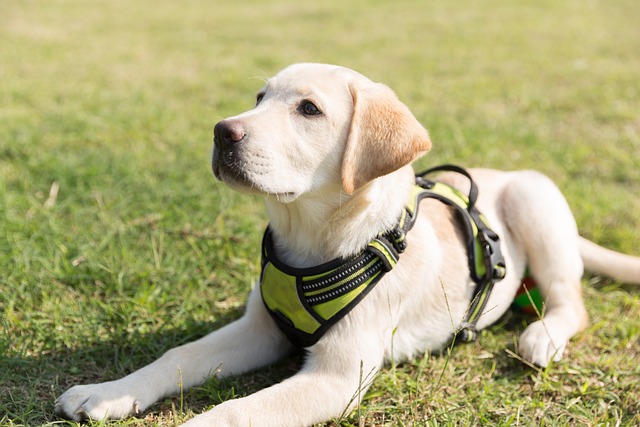
How can I tell if my dog's heatstroke is serious
Let’s be real: It’s a sticky August morning in Los Angeles, and you took your 2-year-old Golden Retriever, Max, for a walk a little later than usual
Labrador retrievers aren't just pets—they're family members with an appetite that matches their boundless energy. But finding the right diet goes beyond filling their bowl. From avoiding common pitfalls to understanding legal requirements, here’s how to keep your Lab thriving.
The first rule? Quality matters. Look for dog food with named meat sources like "chicken" or "beef" as the first ingredient, not generic "meat meal." Avoid fillers like corn and soy, which can trigger allergies in some Labs. Remember, a high-quality diet might cost more upfront, but it pays off in fewer vet bills down the road.
Labradors have a genetic predisposition to obesity, so portion control is key. Use measuring cups instead of guesswork, and adjust amounts based on your dog’s age, activity level, and neuter status. Puppies need three meals a day to support growth, while adult Labs typically do well with two. And if your Lab loves to lounge more than run, you might need to cut back on calories.
Treats are part of the fun, but they shouldn’t make up more than 10% of your dog’s daily calories. Opt for healthy options like freeze-dried liver, carrots, or apples. Be cautious with human foods; common snacks like chocolate, grapes, and onions can be toxic. When in doubt, check the ASPCA’s list of hazardous foods.
 In many regions, feeding raw diets comes with legal and safety considerations. While raw diets have their proponents, they also pose risks of bacterial contamination—both to your dog and your household. Some areas require raw pet food to meet specific processing standards, so always check local regulations before making the switch.
In many regions, feeding raw diets comes with legal and safety considerations. While raw diets have their proponents, they also pose risks of bacterial contamination—both to your dog and your household. Some areas require raw pet food to meet specific processing standards, so always check local regulations before making the switch.
Supplements can be beneficial, but they aren’t one-size-fits-all. Labs prone to joint issues may benefit from glucosamine and chondroitin, while fish oil can support a healthy coat. However, over-supplementing can cause health problems, so consult your vet before adding anything new to your dog’s routine.
Finally, observe your dog’s body condition score (BCS). You should be able to feel their ribs without pressing hard, and they should have an hourglass shape when viewed from above. If you notice weight gain or loss, adjust their diet accordingly.
Choosing the best diet for your Labrador is an ongoing process. It’s about balancing nutritional needs, managing their weight, and navigating local regulations. By paying attention to quality, portion sizes, and your dog’s individual needs, you’ll keep your furry friend healthy, happy, and ready for every adventure that comes their way.

Let’s be real: It’s a sticky August morning in Los Angeles, and you took your 2-year-old Golden Retriever, Max, for a walk a little later than usual

You're enjoying a summer afternoon at the park when you notice your dog has stopped panting and appears disoriented - their gums are bright red

Let’s paint the picture: You’re in your Denver apartment, watching your 4-year-old Boston Terrier, Ruby, plop down mid-play session with her favorite toy

Many dog owners notice their pets nails seem shorter after regular walks,but how much does this daily activity actually help?The answer depends on where you walk—concrete sidewalks or asphalt streets gently file nails as a dog's paws hit the ground

Most dog owners notice their pup scooting across the carpet at some point, but few connect it to impacted anal glands. These small sacs near a dog’s rectum secrete a scent for marking territory

Most vets agree that regular dog teeth cleaning is key to avoiding painful dental issues later. For healthy adult dogs, a professional cleaning at the vet’s office every 12 to 18 months usually works well.